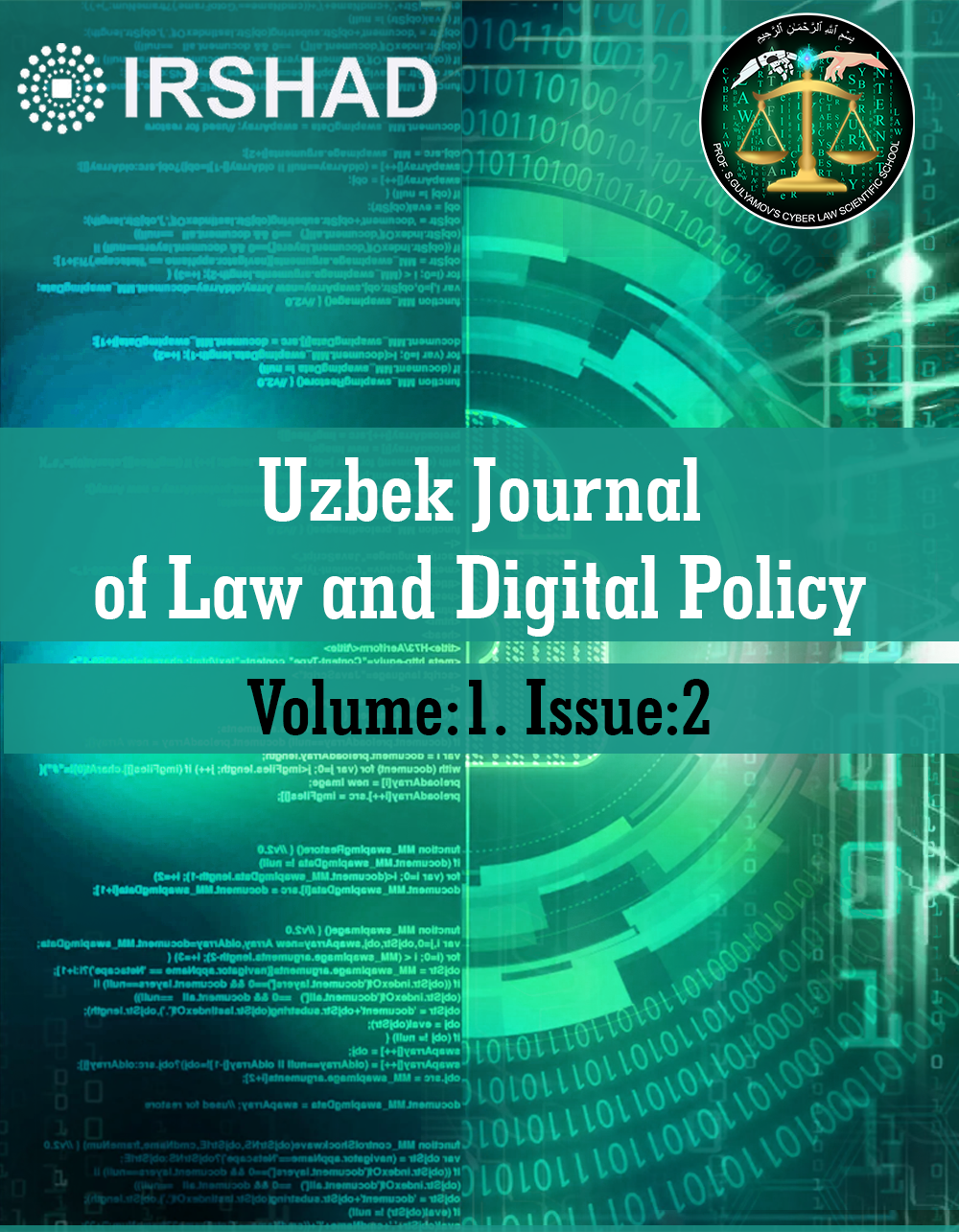Mapping the Legal Landscape: The Intersection of Cartography and Law in a Modern Society
DOI:
https://doi.org/10.59022/ujldp.74Keywords:
Cartography, Disputed Territories, Border Disputes, Legal Challenges, International Cartographic Standards, Legal Frameworks, lternative Mapping Approaches, Counter-mappingAbstract
This article explores the legal problem of representing disputed territories and borders in cartography and examines potential solutions to address this complex issue. The research employs a mixed-methods approach, combining qualitative and quantitative data from academic literature, case studies, cartographic standards, and international legal documents. The findings indicate that border disputes are a widespread and persistent global issue, and cartographers face numerous legal and ethical challenges when representing these disputed areas. Three main potential solutions were identified: the development of international cartographic standards, the implementation of legal frameworks to govern the depiction of borders, and the promotion of alternative mapping approaches. A comparative assessment of these solutions reveals that no single approach is sufficient in addressing the legal problem, and a multifaceted strategy is necessary to promote impartiality, accuracy, and fairness in cartographic practices. The most effective solution may involve a combination of these approaches, leveraging their respective strengths to address the complex legal, ethical, and practical challenges associated with the representation of disputed territories in cartography. Based on our analysis, we propose several policy recommendations and legal reforms to address the problem, as well as suggestions for future research and practical applications in the cartography and legal fields. By pursuing these avenues for future research and practical applications, we hope to contribute to the ongoing efforts to address the legal problem of representing disputed territories and borders in cartography and promote more equitable, transparent, and effective practices in this important field.
References
Branch, J. (2014). Mapping the sovereign state: Technology, authority, and systemic change. International Organization, 68(1), 1-36. https://doi.org/10.1017/S0020818313000369
Braun, V., & Clarke, V. (2006). Using thematic analysis in psychology. Qualitative Research in Psychology, 3(2), 77-101. https://doi.org/10.1191/1478088706qp063oa
Allah Rakha, N. (2023). Navigating the Legal Landscape: Corporate Governance and Anti-Corruption Compliance in the Digital Age. International Journal of Management and Finance, 1(3). https://doi.org/10.59022/ijmf.39 Retrieved from https://irshadjournals.com/index.php/ijmf/article/view/39
Crampton, J. W., & Kitchin, R. (Eds.). (2017). Mapping: A critical introduction to cartography and GIS. John Wiley & Sons.
Allah Rakha, N. (2023). Regulatory Barriers Impacting Circular Economy Development. International Journal of Management and Finance, 1(2). https://doi.org/10.59022/ijmf.29. Retrieved from https://irshadjournals.com/index.php/ijmf/article/view/29
Creswell, J. W., & Plano Clark, V. L. (2017). Designing and conducting mixed methods research. Sage Publications.
International Cartographic Association (ICA). (n.d.). Standards. Retrieved from https://icaci.org/standards/
Kent, A. J., & Vujakovic, P. (2009). Stylistic diversity in European state 1:50 000 topographic maps. The Cartographic Journal, 46(3), 179-213. https://doi.org/10.1179/000870409X12488753453453
Kelly, P. (2011). UNCLOS and the legal balance of power: The Paradox of hegemonic legality. China Journal of International Law, 10(1), 43-63. https://doi.org/10.1093/chinesejil/jmq025
Allah Rakha, N. (2023). Artificial Intelligence and HR Management. International Journal of Management and Finance, 1(1). Retrieved from https://irshadjournals.com/index.php/ijmf/article/view/25
Larson, R. S. (2013). Ethical issues in the big data industry. MIS Quarterly Executive, 12(2), 67-85. Retrieved from https://aisel.aisnet.org/misqe/vol12/iss2/3
Muehlenhaus, I. (2014). Web cartography: Map design for interactive and mobile devices. CRC Press.
Newman, D., & Paasi, A. (1998). Fences and neighbours in the postmodern world: Boundary narratives in political geography. Progress in Human Geography, 22(2), 186-207. https://doi.org/10.1191/030913298671334062
Peluso, N. L. (1995). Whose woods are these? Counter-mapping forest territories in Kalimantan, Indonesia. Antipode, 27(4), 383-406. https://doi.org/10.1111/j.1467-8330.1995.tb00286.x
United Nations. (1982). United Nations Convention on the Law of the Sea. Retrieved from https://www.un.org/depts/los/convention_agreements/texts/unclos/unclos_e.pdf
Downloads
Published
How to Cite
Issue
Section
License
Copyright (c) 2023 Uzbek Journal of Law and Digital Policy

This work is licensed under a Creative Commons Attribution 4.0 International License.




